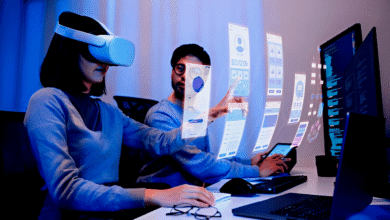Breakthrough Medical Devices: Transforming Recovery After Surgery and Injury
Innovative medical devices are streamlining and personalizing recovery from surgery and injuries, with impacts spanning hospitals, outpatient clinics, and home care.

Key Takeaways
- Innovative medical devices are streamlining and personalizing recovery from surgery and injuries, with impacts spanning hospitals, outpatient clinics, and home care.
- Wearable technology, AI-powered feedback systems, and advanced materials are helping both patients and care teams manage rehabilitation more safely and efficiently.
- Evidence-based approaches increasingly guide the design and implementation of new medical devices, improving short- and long-term outcomes for diverse patient groups.
- Cost, usability, and regulatory obstacles remain, but technology is making recovery more accessible and patient-centric than ever before.
Advancements in medical technology are changing the way patients heal after surgery and injury. Innovative devices are central in speeding up recovery, reducing pain, and improving overall outcomes. From wearable sensors that monitor vital signs in real time to robotic systems that assist with rehabilitation, these tools support the body’s natural healing process while offering greater comfort and precision. As healthcare continues to evolve, such breakthroughs are becoming essential in helping individuals regain mobility, strength, and independence more efficiently than ever before.
Why Advanced Devices Matter in Recovery
The world of recovery after surgery or injury is unrecognizable compared to just a decade ago. Today, patient expectations have shifted, due in large part to advances in medical technology that have enabled post-surgical healing to become not only more predictable, but also more comfortable and adaptive. Gone are the days of waiting indefinitely for your next doctor’s appointment to assess your progress. With the rise of innovative supports, remote tracking, and digital therapeutics, healthcare professionals and patients can now work together in real time to optimize healing. For instance, innovative FIR healing solutions leverage beneficial far-infrared energy to promote cellular regeneration and reduce inflammation, adding another dimension to the traditional rehabilitation toolkit—one that’s passive for the patient, yet active at the tissue level.
This intersection of comfort and performance is at the heart of the ongoing transformation. It’s not only elite athletes who benefit from these breakthrough technologies; elderly patients, individuals with chronic conditions, and people with physically demanding jobs are all seeing life-changing results. Initiatives led by organizations such as the National Institutes of Health show that new technology platforms are dramatically accelerating healing timelines, supporting bone and tissue repair, and even reducing the risk of secondary complications, such as infection and deep vein thrombosis. This approach empowers patients to take a more active role in their recovery, whether transitioning from the surgical suite to outpatient care or managing rehabilitation at home.
Key Technologies Shaping Healing Today
The innovation fueling these recovery breakthroughs is multi-faceted, blending advances from bioengineering, robotics, material science, and digital health. Biocompatible and adaptive materials, for instance, have enabled the development of supports such as 3D-printed splints and braces that are both highly customizable and more comfortable for long-term wear. This results in devices that conform perfectly to unique anatomies, improving mechanical support and reducing skin irritation—a particularly meaningful benefit for those who require extended rehabilitation.
- AI-powered feedback systems: These systems are revolutionizing physical therapy by providing instant, actionable feedback on technique and progress. Patients perform movements, and real-time analysis ensures that exercises are performed safely and effectively. Therapists can track progress remotely and intervene only when necessary.
- App-connected devices: Many new supports connect with mobile or cloud-based apps, allowing seamless patient and care team communication. These digital connections facilitate reminders, daily goal setting, and tracking of symptoms, bridging the gap between appointments and empowering early intervention.
- Biofeedback sensors: Embedded within bandages, braces, or skin patches, these sensors monitor subtle physiological signals—like swelling, temperature, or muscle activation—providing a detailed picture of the healing environment that would be tough for even the best clinicians to gather otherwise.
As noted in the latest medical device trends overview, the most promising development is integrating artificial intelligence and machine learning. This not only enhances diagnostics but also helps predict potential setbacks and suggest personalized therapy plans. This suite of technologies is fostering a shift from reactive medicine to proactive, patient-centered recovery.
The Role of Wearables and Remote Monitoring
Perhaps nothing has signaled the modernization of rehabilitation more than the rapid rise of wearable medical devices. These tools—from braces with motion sensors to discreet adhesive patches—allow for continuous, real-time monitoring of a patient’s physical activity, vital signs, and healing progress. Even ordinary movements, like walking up stairs or reaching for an object, can be tracked and analyzed. That data can then be interpreted to uncover patterns, proactively manage pain or inflammation, and alert clinicians and family members if subtle warning signs arise.
Wearables are more than a safety net. They offer a sense of reassurance and connection to care, even from a distance. Remote monitoring can make the difference between a smooth recovery and a costly hospital readmission for people recovering at home, where risks like falls, improper movement, or unnoticed swelling can jeopardize progress. This level of consistent oversight reduces the need for unnecessary in-person visits and creates a continuous feedback loop, making every step of recovery safer and more predictable.
Clinical Evidence and Data Supporting Effectiveness
The momentum behind advanced recovery devices isn’t just hype—it’s rooted in strong clinical evidence. Large-scale studies have shown that patients who use smart, sensor-equipped supports experience quicker rehabilitation, lower infection rates, and fewer surgical complications than those following strictly conventional protocols. For example, using digital health interventions in post-joint replacement care has reduced pain and improved joint function, bolstered by instant adjustments based on physiological metrics.
Real-world data collection by hospitals and clinics further reinforces these findings, revealing that tailored rehabilitation and close monitoring through advanced technologies decrease hospital length of stay and dramatically lower readmission rates. The psychological impact is also notable: having measurable progress and greater awareness of one’s recovery status fosters a stronger sense of control, which research suggests is a powerful motivator for patient adherence and satisfaction.
Personalized Rehabilitation: A Game Changer
Every patient’s recovery journey is unique, influenced by age, pre-existing health conditions, lifestyle, and personal motivation. The “one-size-fits-all” philosophy that once dominated rehabilitation gives way to a tailored approach, powered by data and adaptable technology. Today’s smart devices can calibrate exercise intensity, frequency, and type to suit real-time needs. If progress is slower than expected, therapy can be adjusted; if pain spikes, preventive interventions can be triggered immediately.
Personalized dashboards, goal-setting apps, and in-app coaching keep patients engaged, helping them celebrate small victories and stay focused through setbacks. Having a program that recognizes each increment of progress can be especially valuable for those who are easily discouraged, turning difficult rehabilitation periods into manageable, rewarding experiences. For children and older people, whose recovery needs may change rapidly, this degree of customization can accelerate healing while reducing frustration and the risk of abandoning therapy too soon.
Challenges and Barriers to Adoption
While the horizon is bright, several obstacles could impede the widespread adoption of breakthrough medical devices. Cost remains a primary barrier—state-of-the-art supports and integrated monitoring systems are often not fully covered by insurance, and out-of-pocket expenses can make them unattainable for many patients. Regulatory hurdles further complicate the process, as manufacturers must meet rigorous standards for safety and efficacy. Approval timelines can be lengthy, slowing the delivery of promising new tools to clinical environments.
- Cost barriers: These devices often require upfront investments and ongoing subscription fees for digital services.
- Regulatory approval: Delays in the approval pipeline can prevent timely access to innovative technology.
- Usability: Not all devices are intuitive; elderly patients or those less comfortable with technology may struggle with interfaces or require extra training and support.
These challenges underscore the ongoing need for advocacy, education, and smart, user-centric design. By addressing barriers and engaging all stakeholders—patients, clinicians, insurers, and policymakers—the benefits of advanced devices are more likely to reach those who need them most.
Future Trends on the Horizon
The pace of innovation is only accelerating. Future devices will do more than track progress; they’ll integrate deeply with telehealth platforms, delivering remote guidance, adjusting therapies automatically, and using predictive analytics to detect issues before symptoms arise. Some experts anticipate that AI-powered support tools will continuously analyze a patient’s data and offer adaptive suggestions, making rehabilitation more flexible and individualized.
Emphasis on patient data privacy and integration with broader healthcare systems will be essential, ensuring that sensitive information remains secure while maximizing the power of personalization. In coming years, widespread implementation of these trends may help reduce overall healthcare costs by reducing hospital stays and complications—benefiting patients and health systems alike.
Real-Life Examples of Devices at Work
These innovations are already reshaping lives. After tendon repair surgery, some patients use smart splints that gently increase support as tissue heals, tracking progress and alerting both patient and care team if complications arise. Athletes recovering from ligament injuries use intelligent wearables that monitor biomechanics, preventing repeat injury by flagging dangerous movement patterns.
- Stroke survivors are rebuilding mobility step by step with lightweight sensors, enabling physical therapists to monitor and tweak rehabilitation from afar based on real-time feedback.
- Post-operative patients rely on patches that monitor for signs of swelling or infection, delivering early alerts that might avert emergency care or re-hospitalization.
- Elderly individuals are staying out of skilled nursing facilities longer, thanks to remote-monitoring wearables that allow both clinical teams and family members to check in on healing and respond before problems escalate.
As advanced medical devices become more mainstream and adoption grows in high-tech hospitals and small community clinics, recovery will increasingly be defined not by what is lost but by what can be regained. With these tools, every patient, regardless of background or injury, can access new levels of hope and healing.











